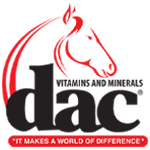It takes many small components to make up the big picture we see in the horse show world. Blood, sweat, tears and money are poured into this passion to make that picture a winning one.
In a sport where one thing can knock you out of the money, the points, or the goal you’re working toward, there’s one resource competitors may overlook: Equine bodywork.
What is Equine Bodywork?
With a combination of massage, acupressure work and stretching techniques, an equine bodywork program is designed to help your horse perform at its best. Each session is tailored to the horse and its unique situation, and focuses on the horse as a whole.
Certification, practice and an understanding of equine biomechanics isn’t always enough to create a good equine bodyworker. You must be able to read the subtle and not-so-obvious responses of the horse – it’s a feel that cannot be taught.
Just as a good rider has a “feel” for the horse and can bring out its best, a good bodyworker can feel the tension, temperature and texture of the horse’s muscles and gauge its response, releasing tension.
When tension in various parts of the horse’s body is released, the horse will be able to do its job more comfortably and willingly. Many clients – both non-pros and trainers – have commented that their horse feels softer and more fluid after a bodywork session.
Why Choose Equine Bodywork?
Regular sessions can help catch an issue before it becomes an acute or chronic problem or injury. Many musculoskeletal problems are a result of the buildup of many small strains. Left untreated, an area of tension can become a knot, then a spasm, and finally a muscle strain or tear – which can take weeks or months to rehabilitate correctly.
Additionally, when the horse compensates for an issue, however small, it leads to misuse or overuse of other muscles, creating unnecessary stress on the opposing muscles and joints.
When you consider that there are more than 150 muscles in the horse’s body, it’s easy to understand how one thing often leads to another. Treating only one area of the horse’s body doesn’t always eliminate the cause of a problem.
Soreness and tension can also be caused by the stress of competition, long hauls, foot pain, repetitive motion, saddle issues, and many other reasons. Tension may present as a loss of range of motion, stiffness, resistance, one-sidedness, and problems with transitions or collection. It can also be the root of a problem or issue that is hard to pinpoint.
Just because a horse does not display signs of tension doesn’t mean it’s not there – I’ve always found at least one area of tightness on every horse I’ve worked on.
Nearly every horse can benefit from bodywork. Besides releasing tension, some additional benefits clients have noted include:
• Improved range of motion
• Increased circulation (which speeds the removal of lactic acid and therefore helps eliminate soreness and shortens post-workout recovery time)
• A softer, more relaxed horse
Sessions last between 45-60 minutes, and I prefer to work on horses prior to a schooling or exercise session. For new clients, I recommend the horse’s first session be one or two days before show time. I have many regular clients who like having their horse worked on as close to show time as possible.
Ideally, a horse that is hauled heavily will receive several massages each month to maintain peak physical condition and avoid performance issues. It is always cheaper to prevent than to treat a problem.
I like to be able to work with the client or trainer to gauge the horse’s condition post-massage, and I refer people to a chiropractor or veterinarian when I feel I cannot help the horse. Equine massage/bodywork is not intended to replace veterinary care, but rather compliment it. Ultimately, it’s the horse’s well-being that is the most important – a comfortable, happy horse is easier to train and show.








